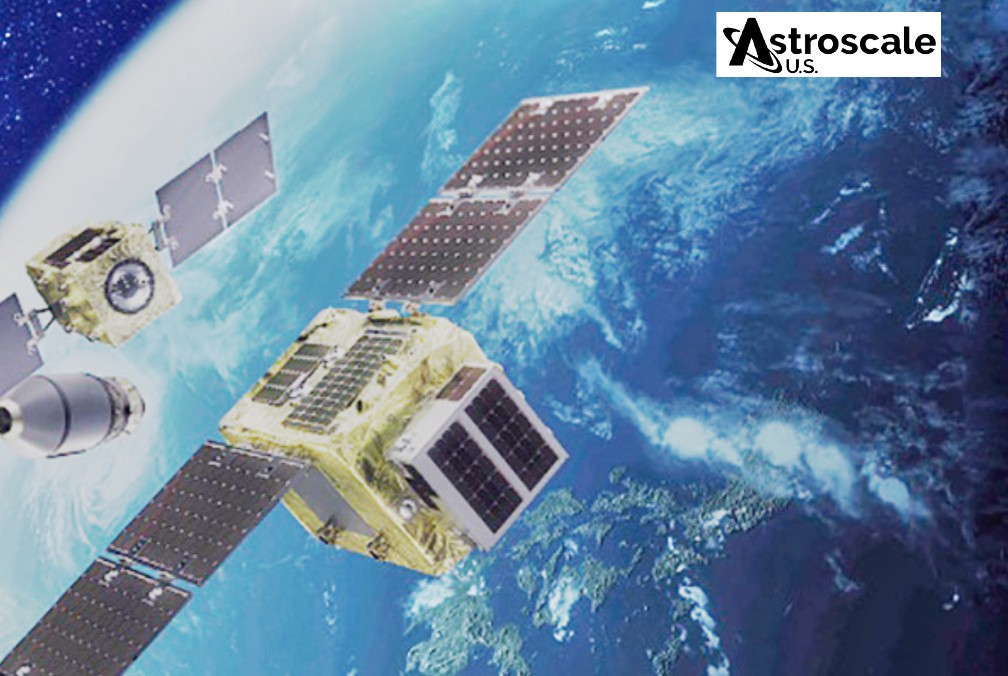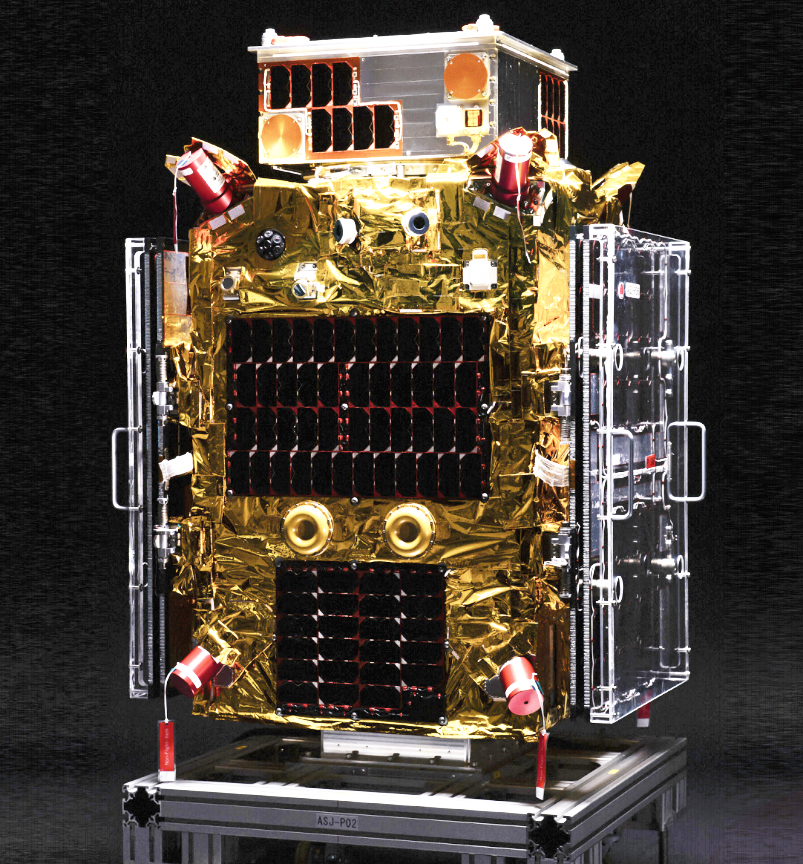
Astroscale Holdings Inc. (“Astroscale”) has revealed a universal docking device the company hopes will become a standard fitment on all, future, LEO satellites.
There are an unprecedented number of satellites due to launch over the next decade, the majority into LEO, (250 to 2000 km above Earth). The U.S. Federal Communications Commission has approved 16,447 satellites within constellations to date and has applications pending for an additional 64,816 satellites. The potential for high-velocity, high impact collisions is likely to increase unless disposal of satellites becomes part of everyday space operations.
Astroscale’s Docking Plate can be compared to a car ‘tow hook’ — a standardized interface that enables future servicing. Docking plates are designed to be discrete during satellite operations but robust and reliable if required. They’re customizable for different satellite designs and will enable both robotic or magnetic capture mechanisms to securely attach a servicer to a satellite.
The End-of-Life Services by Astroscale-demonstration (ELSA-d), currently undergoing testing in LEO, is the first spacecraft servicer of its kind to demonstrate the technology and commercial viability of removing defunct satellites. The ELSA-d mission uses the first prototype of the new docking mechanism, preparing the way for this first commercially available Astroscale Docking Plate for all satellite operators in LEO.

Astroscale’s universal docking technology will keep orbital highways clear and safe by enabling future debris removal and will also support the development of a dynamic, on-orbit ecosystem, powered by the emerging on-orbit services and manufacturing market.
Key features include:
- Discrete: designed to be lightweight, compact and minimally intrusive
- Low-cost: a price that can be integrated into your satellite development costs
- Reliable: components are mechanically secured to be failsafe with no structural adhesive degradation issues
- Robust: undergone qualification testing for the space environment
- Durable: designed for an in-space lifetime of over 15 years
Technical features
- Fiducial markers and retroreflectors: act as docking aids to guide navigation
- Knurled reinforced rim: enables robotic grappling technology. The plate is compatible with a variety of capture mechanisms including magnetic and robotic
- Simple 3 bolt solution: makes it easy to install and can be assembled from the outside
- Truss legs with 3 size options: customizable to suit any satellite design
- Flush mount option: can be integrated into an existing structure
“Over the last 6 decades more than 12,000 satellites have been launched, and this number could more than quadruple in a single decade,” said Nobu Okada, Founder and CEO of Astroscale. “This phenomenal growth shows how important space has become — to our economies, our way of life and to our fight against the climate change crisis. We urge the space community to demonstrate real commitment to protect the space environment by preparing satellites with a Docking Plate for future removal.” “The Astroscale Docking Plate is designed to be lightweight and easy to fit onto low Earth orbit satellites,” said John Auburn, Managing Director of Astroscale Ltd. “As a low-cost solution it enables satellites to be captured and removed from space, keeping our orbital highways clear. We all value satellite communications supporting our global connectivity and economy, and monitoring our environment on Earth. By preparing our spacecraft today we will ensure space is sustainable tomorrow, for future generations.”
